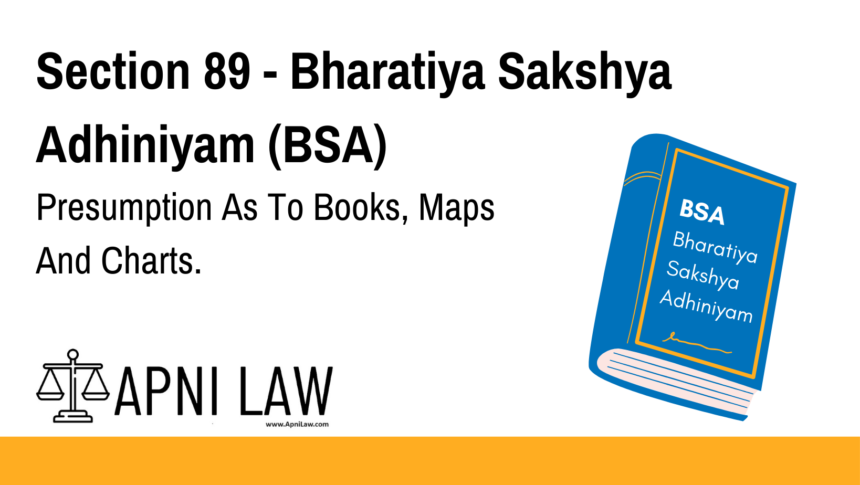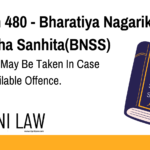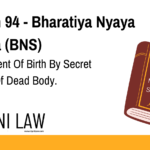Code: Section 89 – Bharatiya Sakshya Adhiniyam, 2023
The Court may presume that any book to which it may refer for information on
matters of public or general interest, and that any published map or chart, the statements of
which are relevant facts, and which is produced for its inspection, was written and published
by the person, and at the time and place, by whom or at which it purports to have been
written or published.
Explanation of Section 89 BSA
Section 89 of the Bharatiya Sakshya Adhiniyam (BSA) provides a presumption regarding books, maps, and charts that are used for reference in court proceedings. This section ensures that such materials, which are relevant to the facts of a case, are presumed to be authentic without requiring detailed proof of authorship or publication details.
Key Provisions:
-
Presumption of Authenticity:
-
The court presumes that any book, map, or chart used for information related to public or general interest is genuine.
-
-
Relevance to the Case:
-
The book, map, or chart must be relevant to the facts of the case. Only those materials that contribute directly to establishing relevant facts are covered by this presumption.
-
-
Presumed Authorship and Publication:
-
The court assumes that the materials were written or published by the person, at the time, and in the place that the material purports to indicate. The presumption extends to both authorship and publication details.
-
This provision helps in simplifying the court process, as it avoids unnecessary challenges to the authenticity of commonly used public documents, such as maps or general-interest books, when they are presented in evidence.
Illustration
Example 1: Referencing a Published Map
In a property dispute case, a map is presented in court showing boundaries of land. The court presumes that the map was published by the person it claims to have been published by, at the time and place it indicates, without requiring additional proof of its authenticity.
Example 2: Using a Historical Book as Evidence
A book containing historical facts is referenced in a case regarding land ownership. The court presumes that the book was authored by the person listed in the publication and published at the specified time and location, simplifying the process of accepting it as evidence.
Common Questions and Answers on Section 89 BSA
1. What types of documents are covered under Section 89?
Section 89 applies to books, maps, and charts that are referenced in court proceedings and are relevant to the case at hand, especially for public or general interest matters.
2. Does the court require proof of who authored or published these materials?
No, Section 89 allows the court to presume the authorship and publication details to be correct, unless the opposing party provides sufficient evidence to the contrary.
3. Can a book, map, or chart be contested under Section 89?
While the court presumes authenticity, the opposing party may challenge the authenticity of the material if there is reasonable evidence to prove it was not written or published as stated.
4. Are all books, maps, and charts presumed to be authentic?
No, only those that are relevant to the case and pertain to public or general interest are covered by this presumption.
5. How does Section 89 simplify the trial process?
Section 89 streamlines the process by reducing the need to independently verify every book, map, or chart presented in court, as long as they are relevant and pertain to public matters.
Conclusion
Section 89 of the Bharatiya Sakshya Adhiniyam (BSA) simplifies the presentation and acceptance of books, maps, and charts as evidence in court. By presuming that these materials are authentic, the court reduces the burden of proving authorship and publication details, as long as they are relevant to the case.
For further information on the BSA and related legal provisions, visit ApniLaw.












